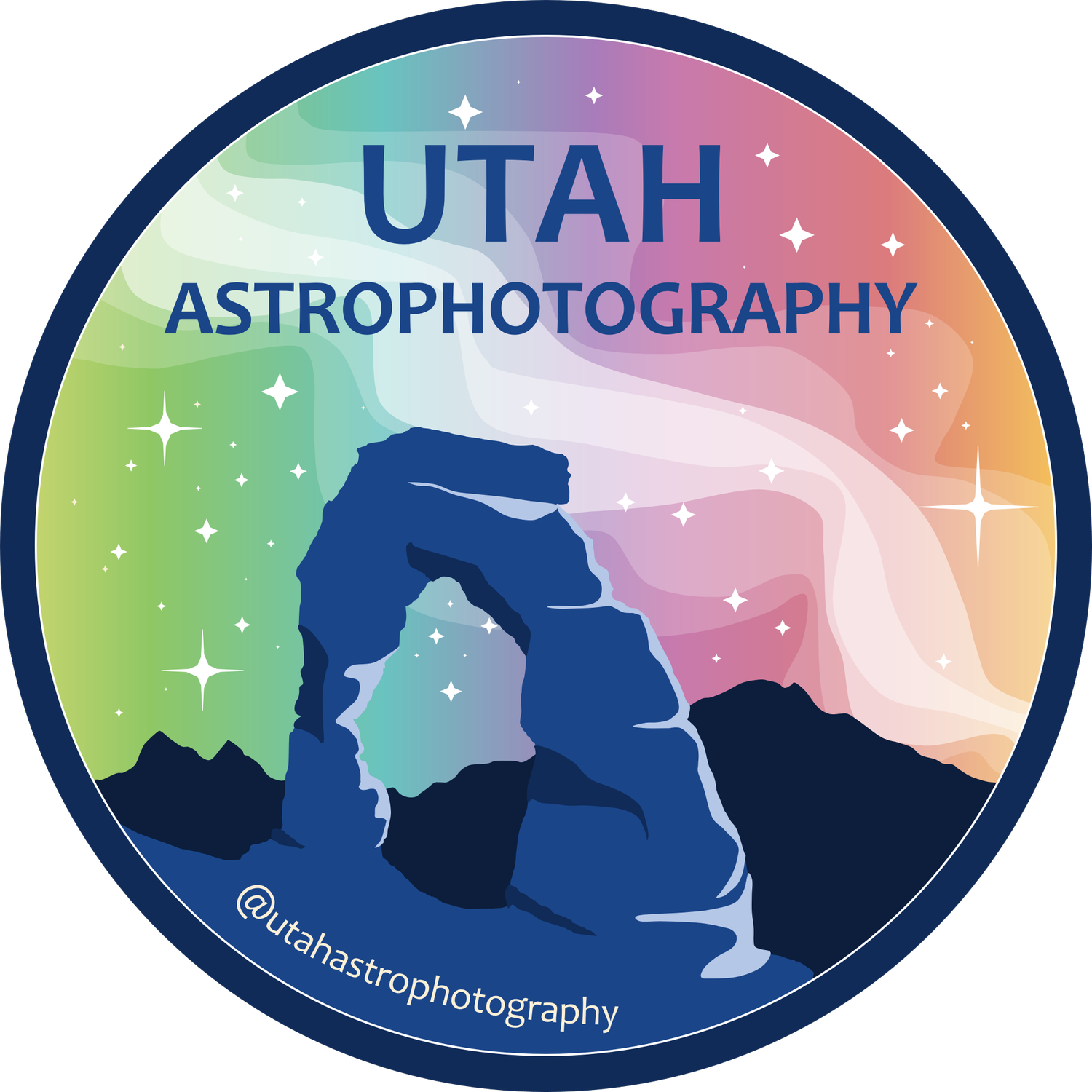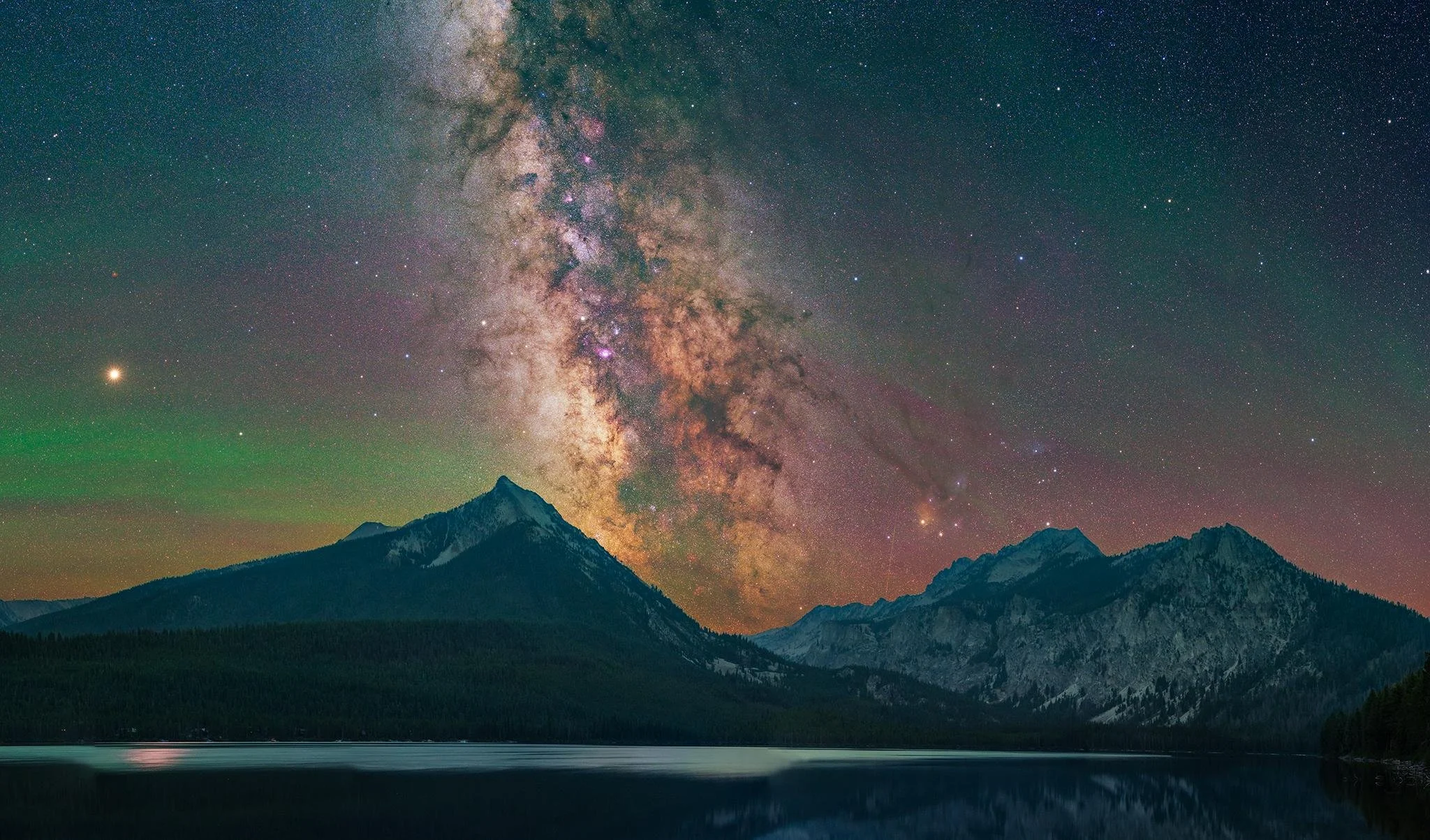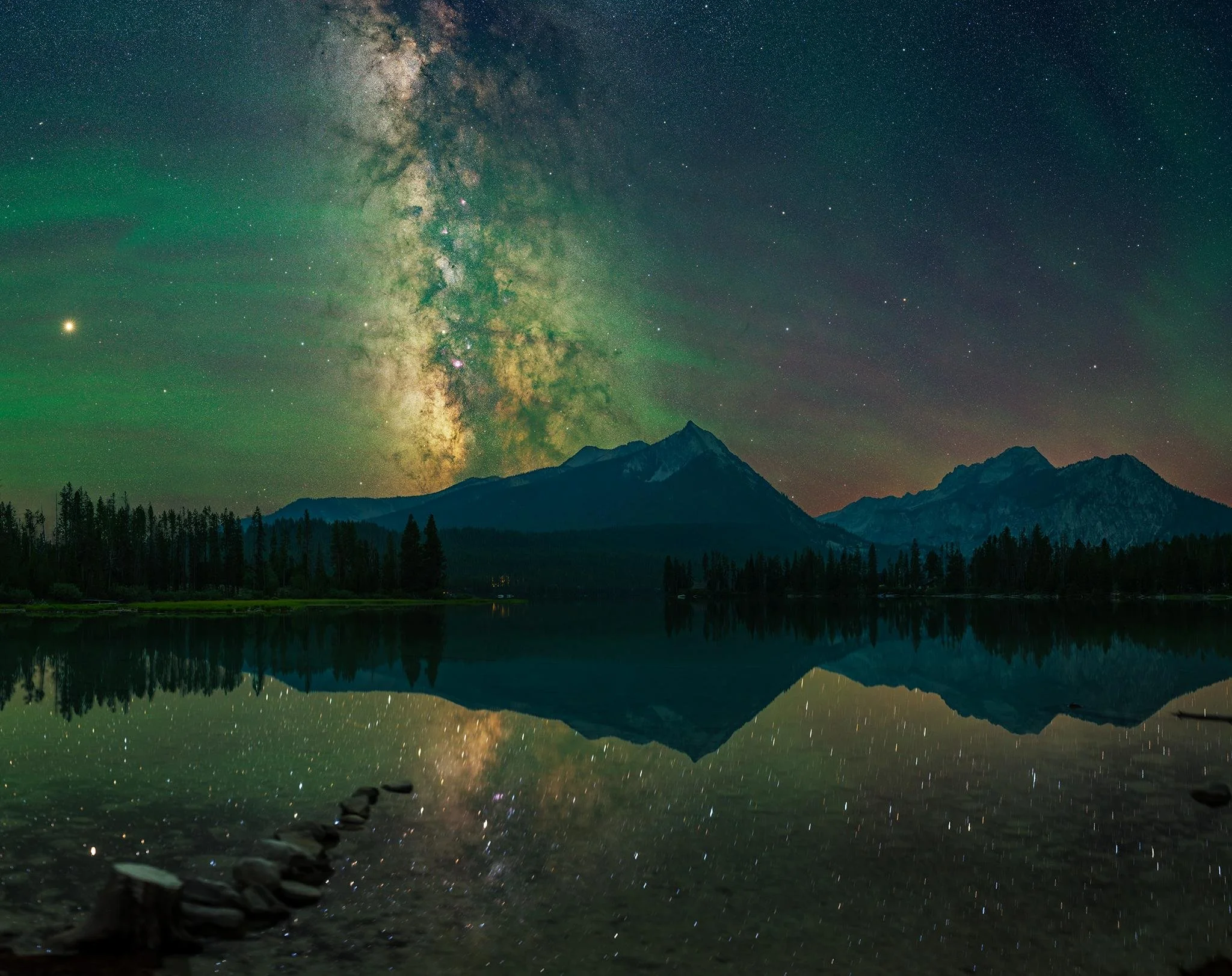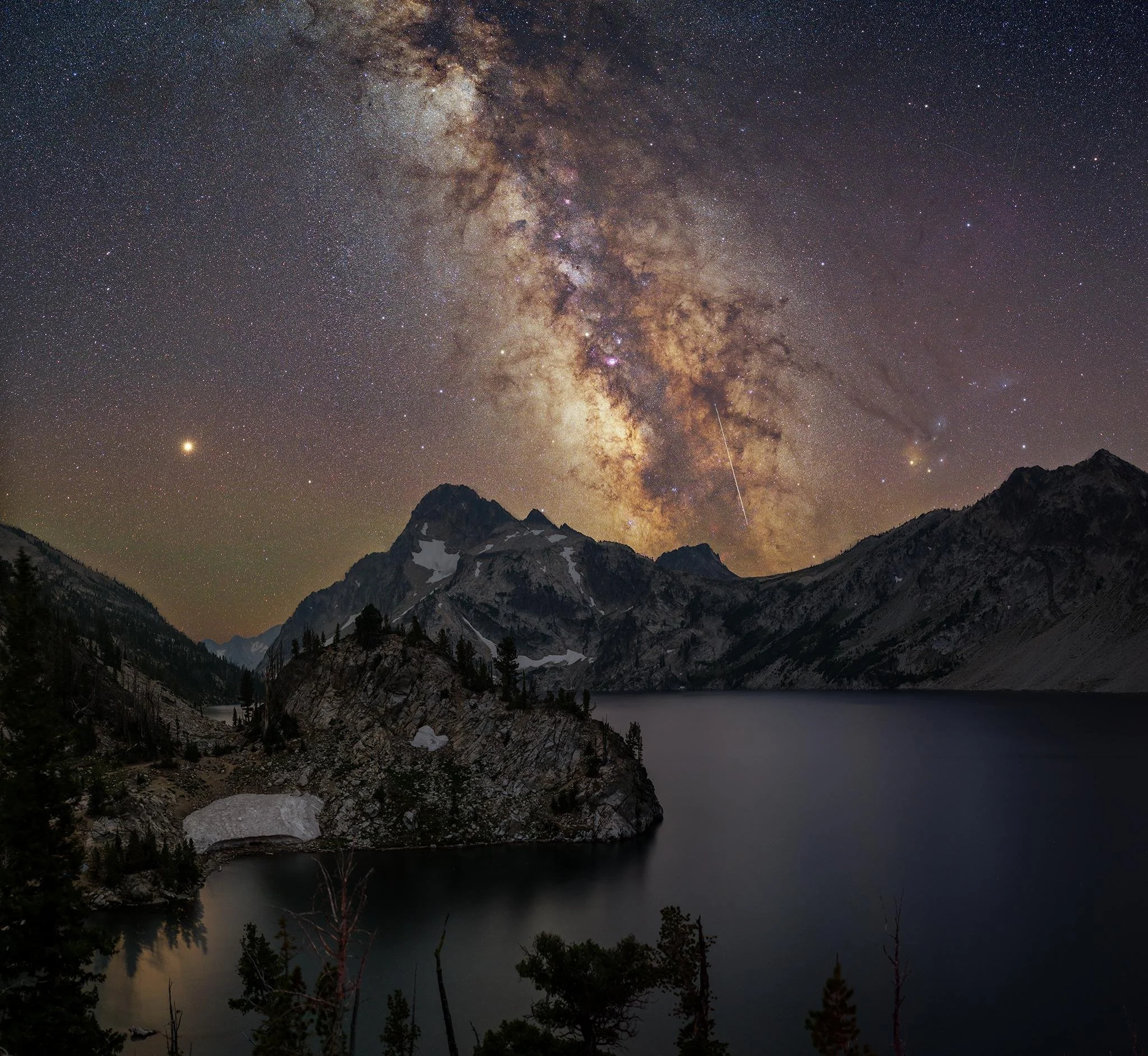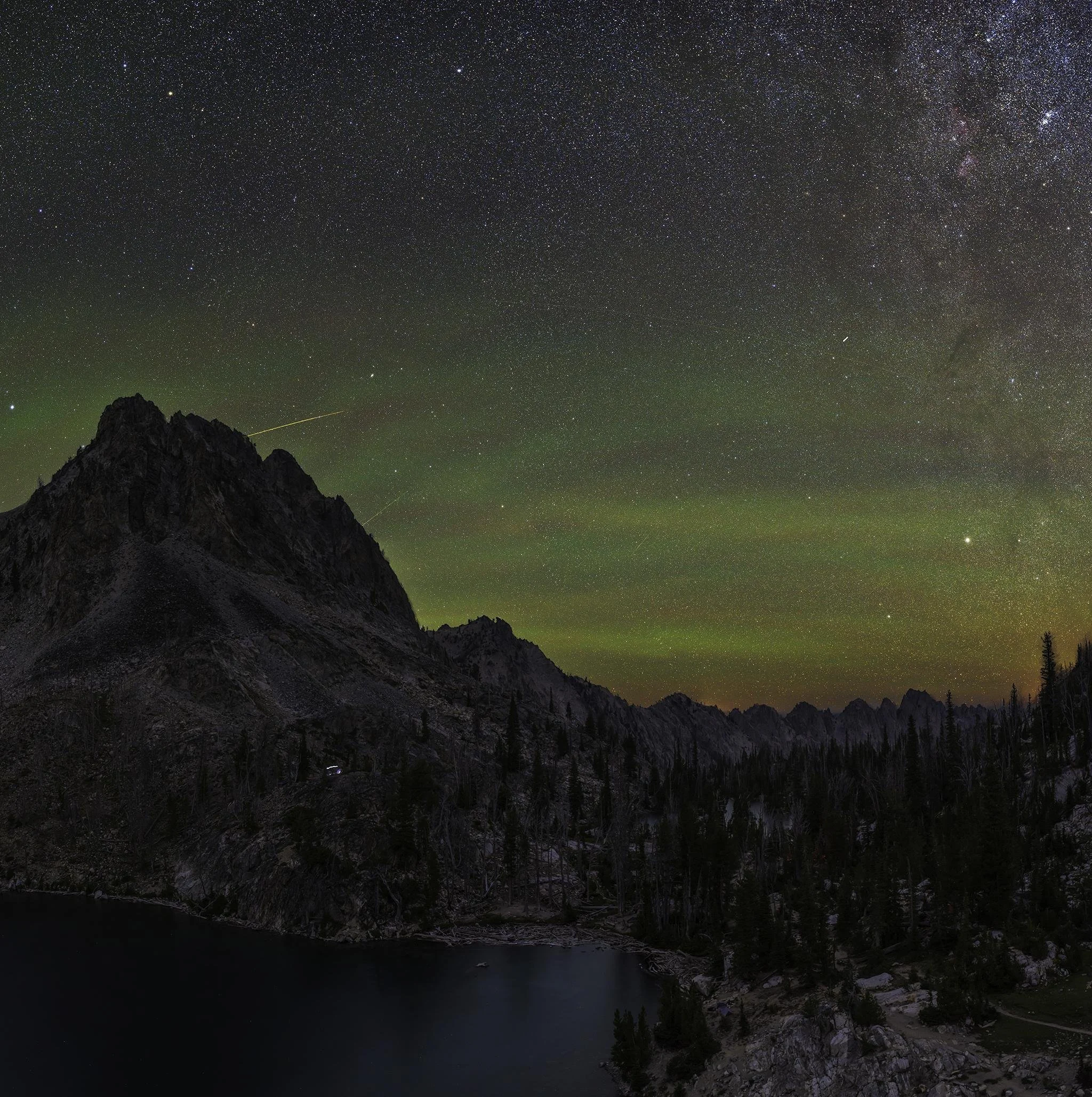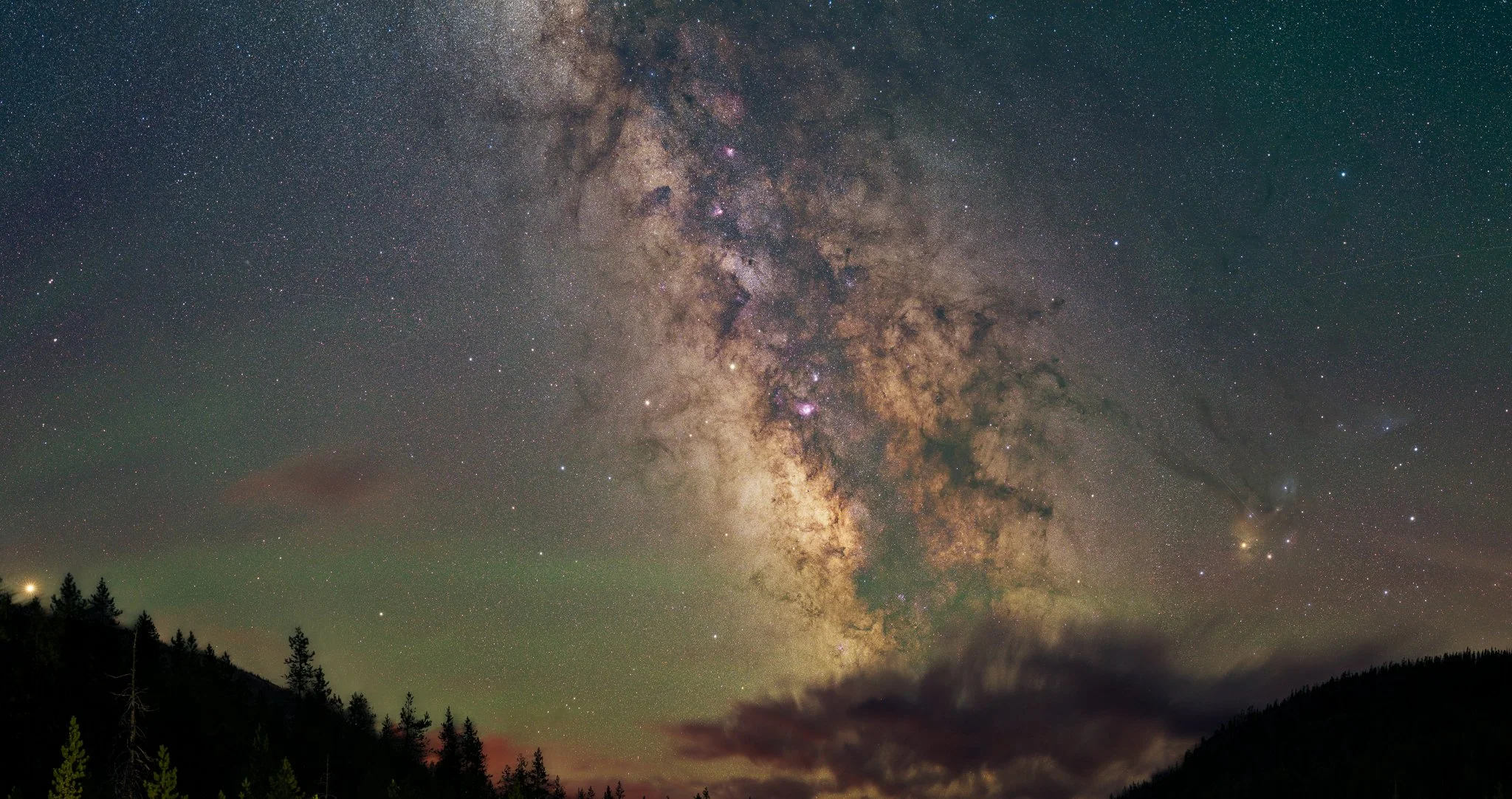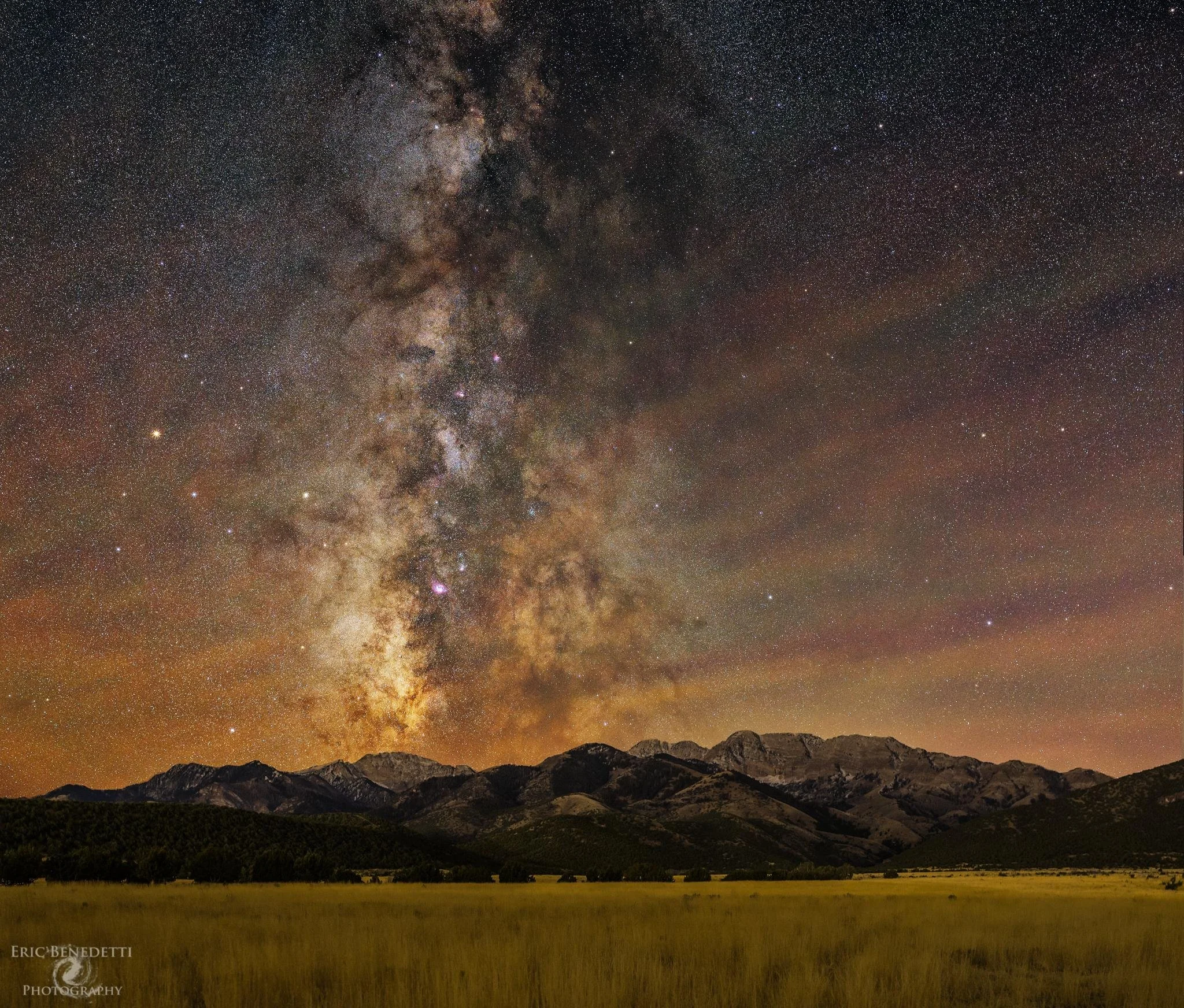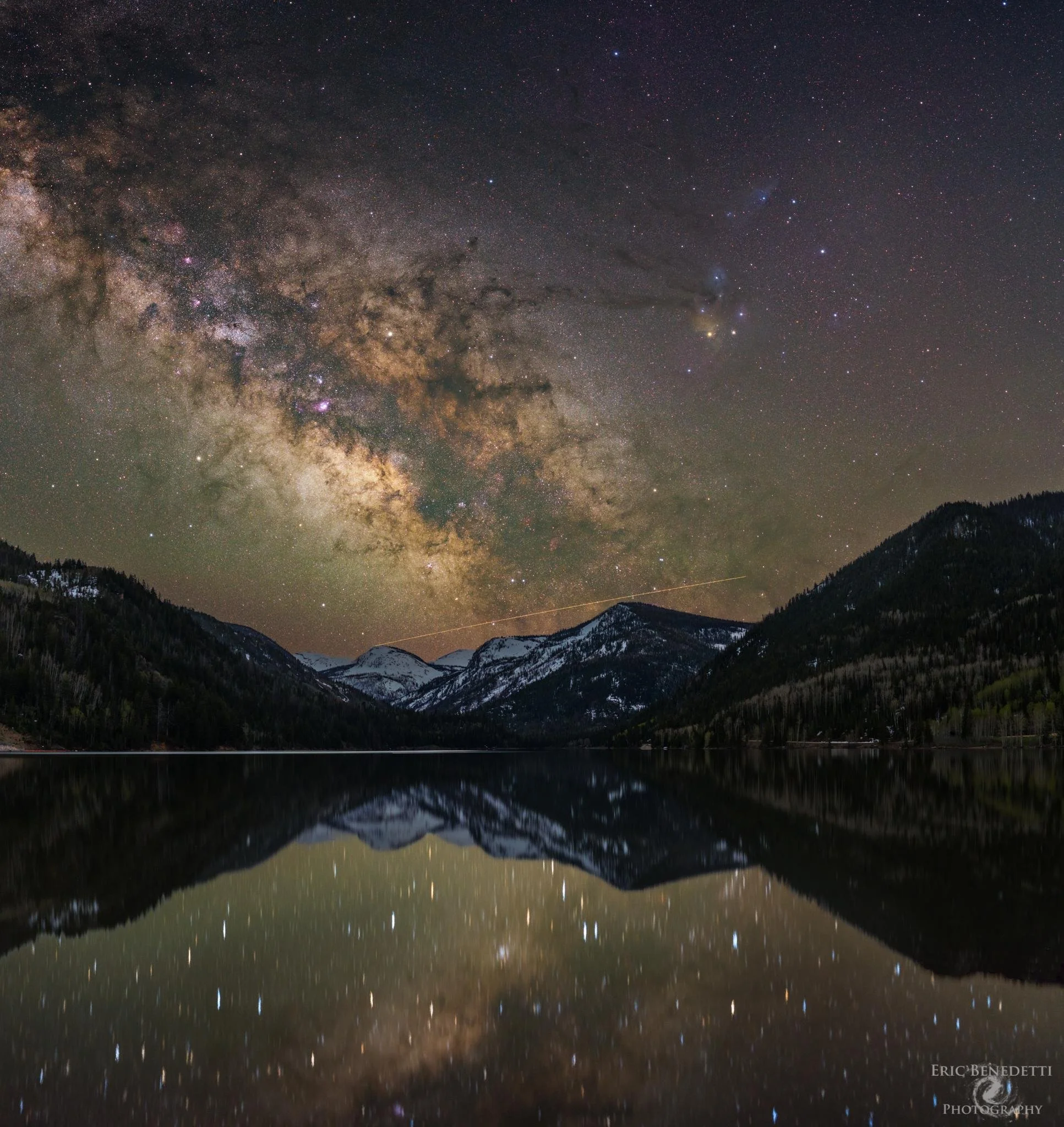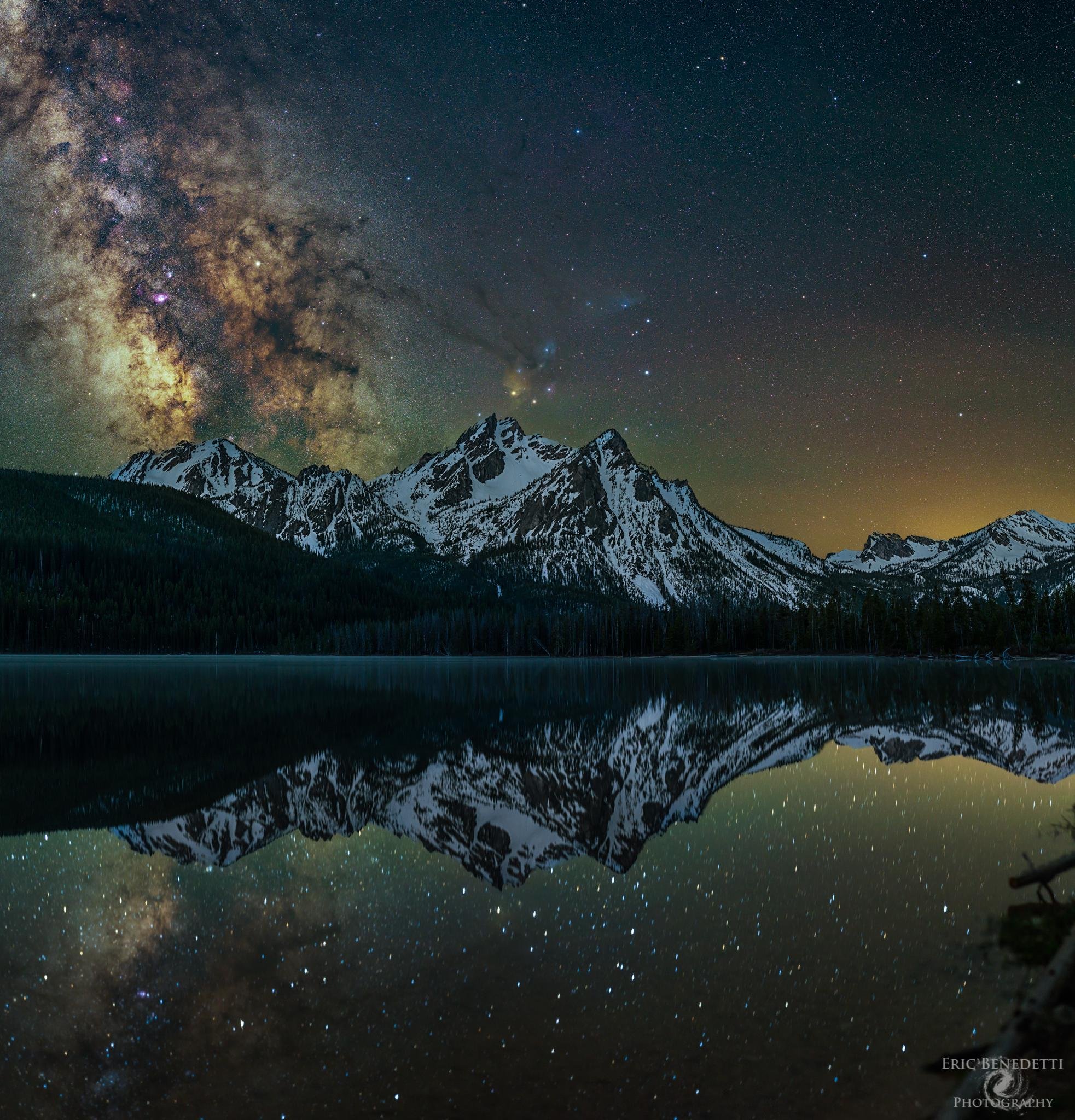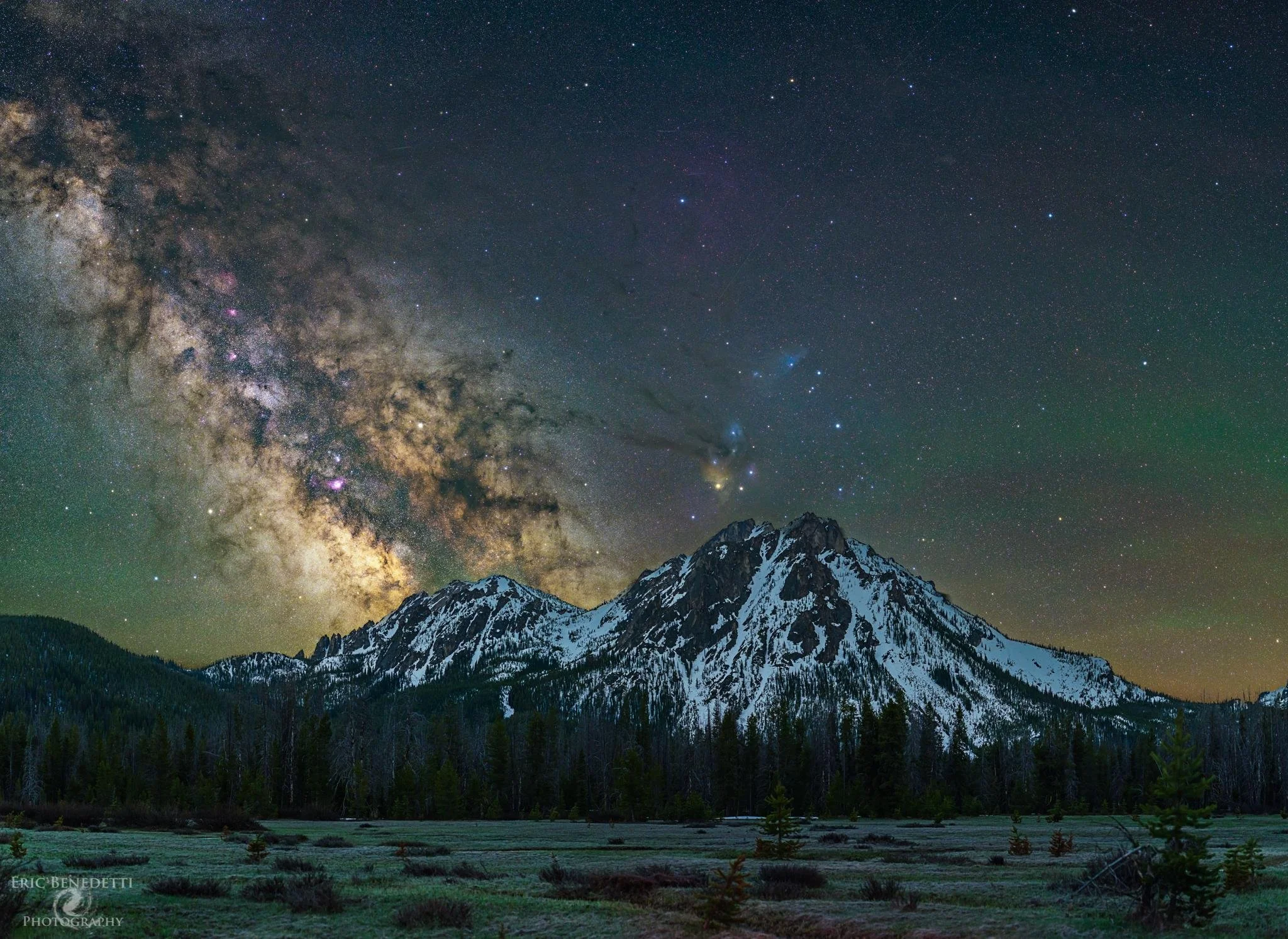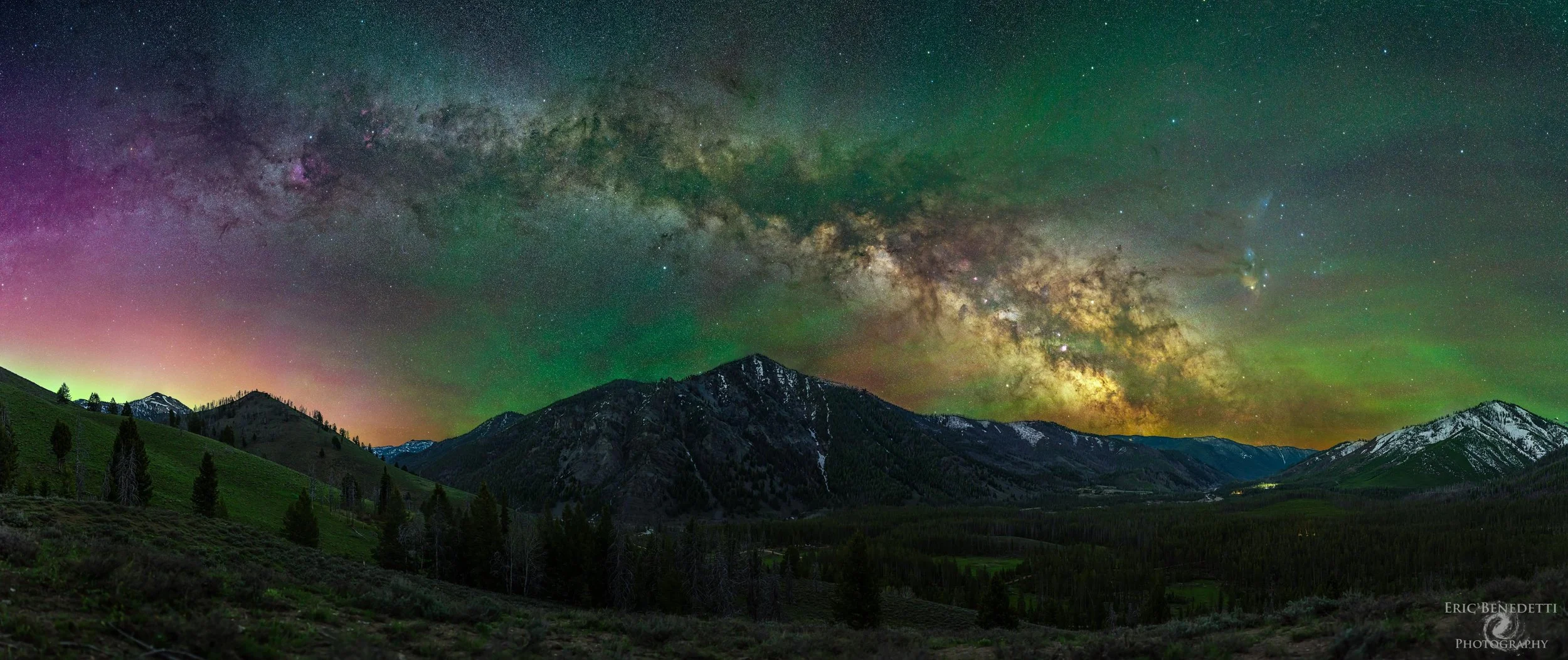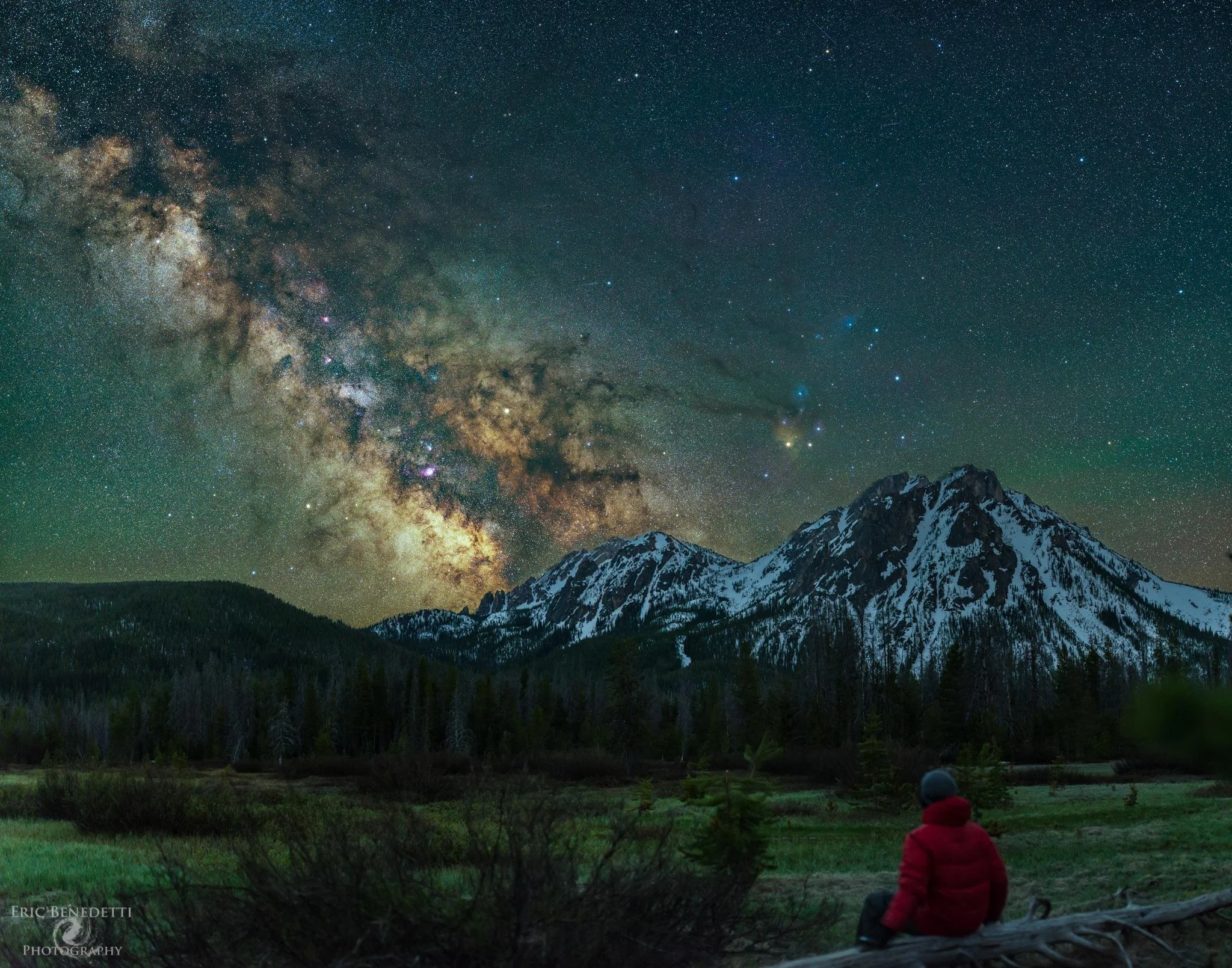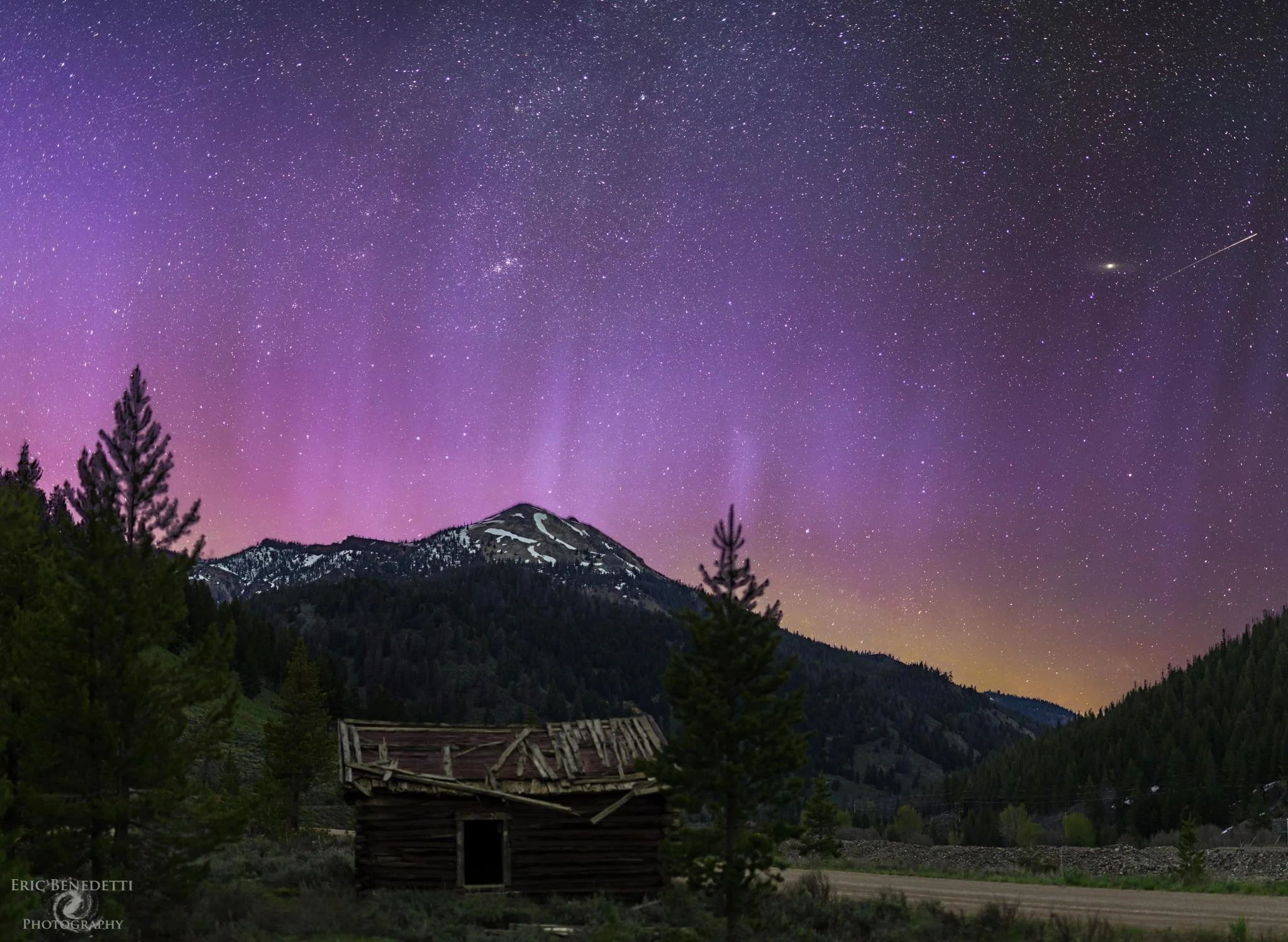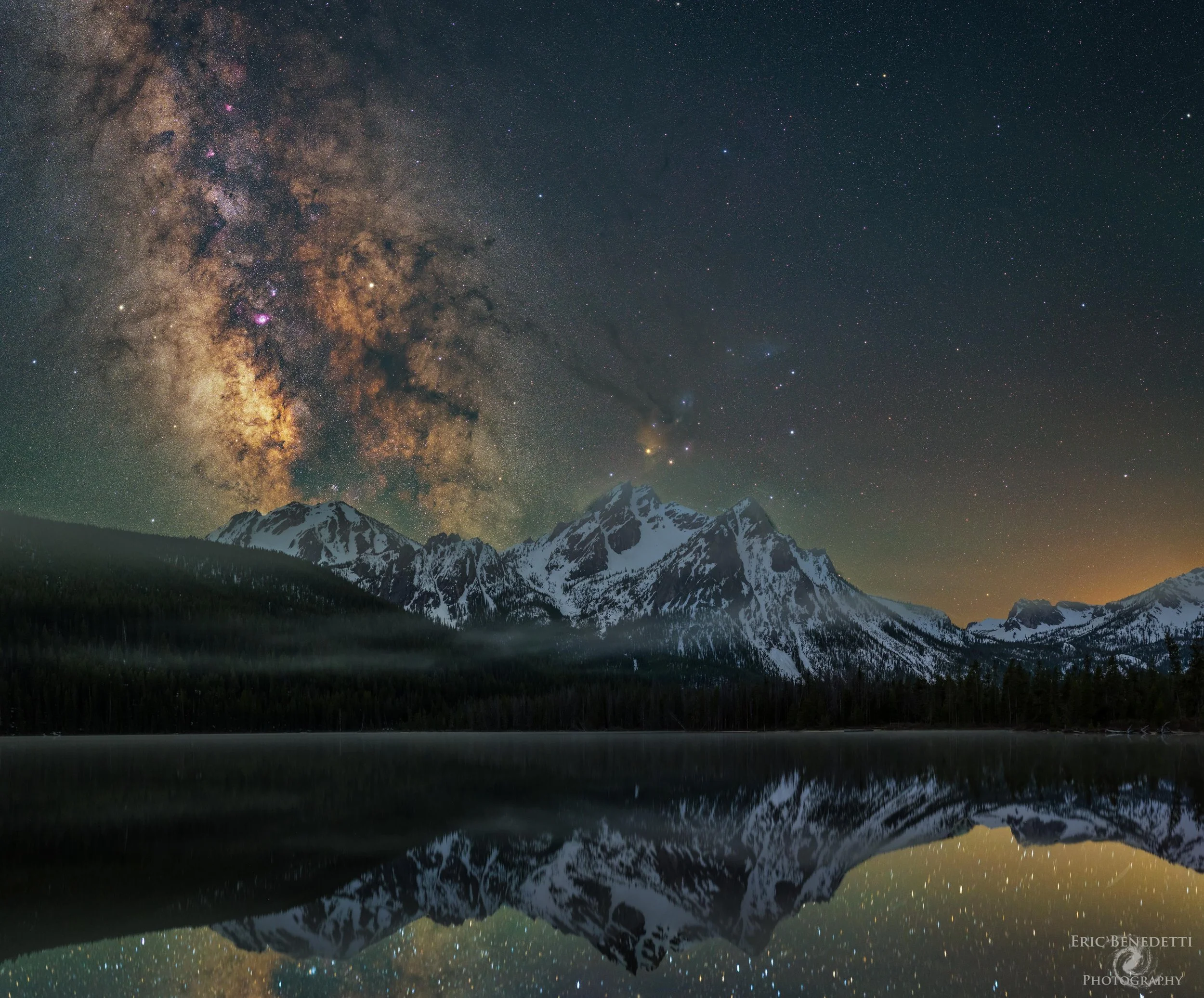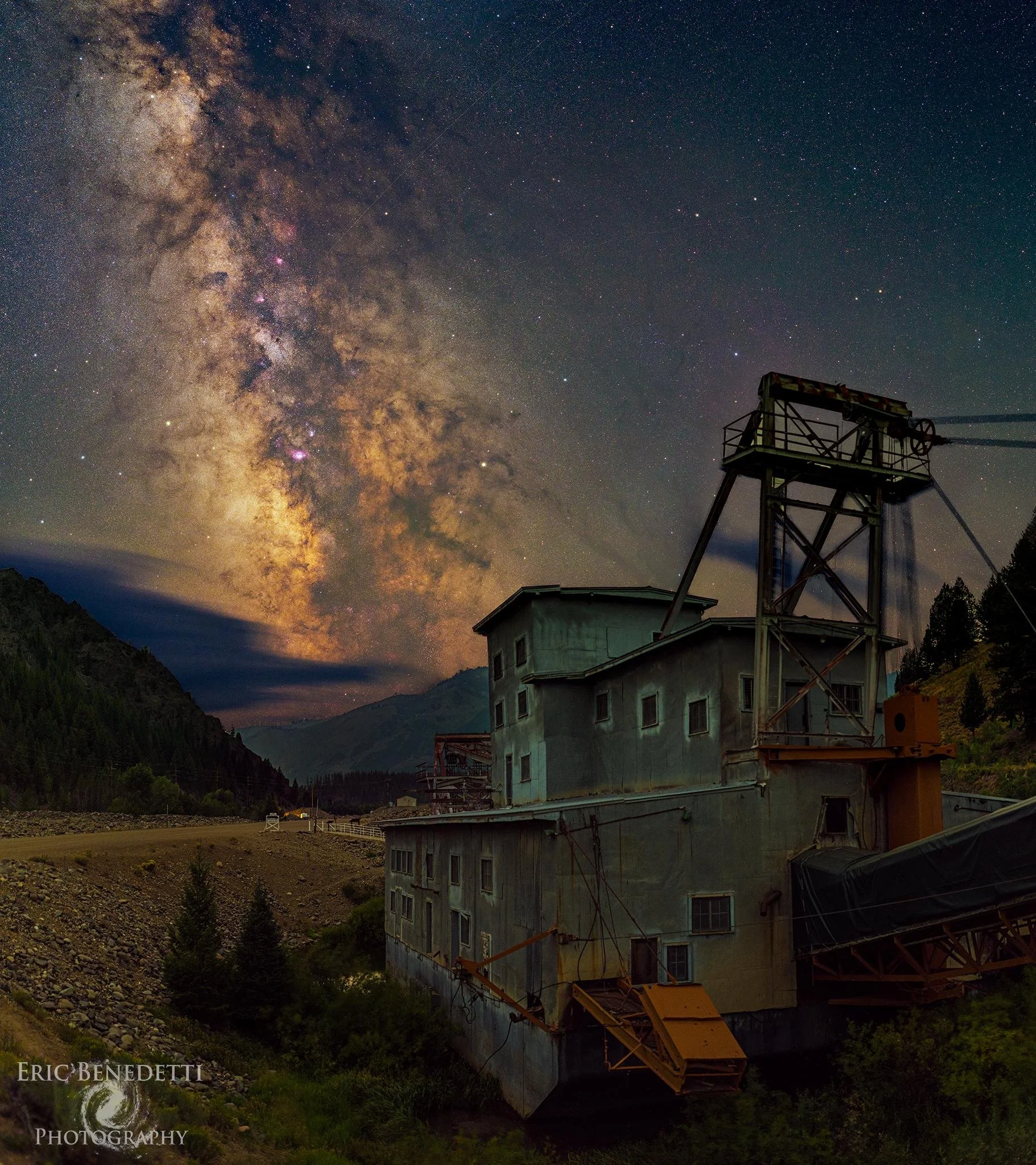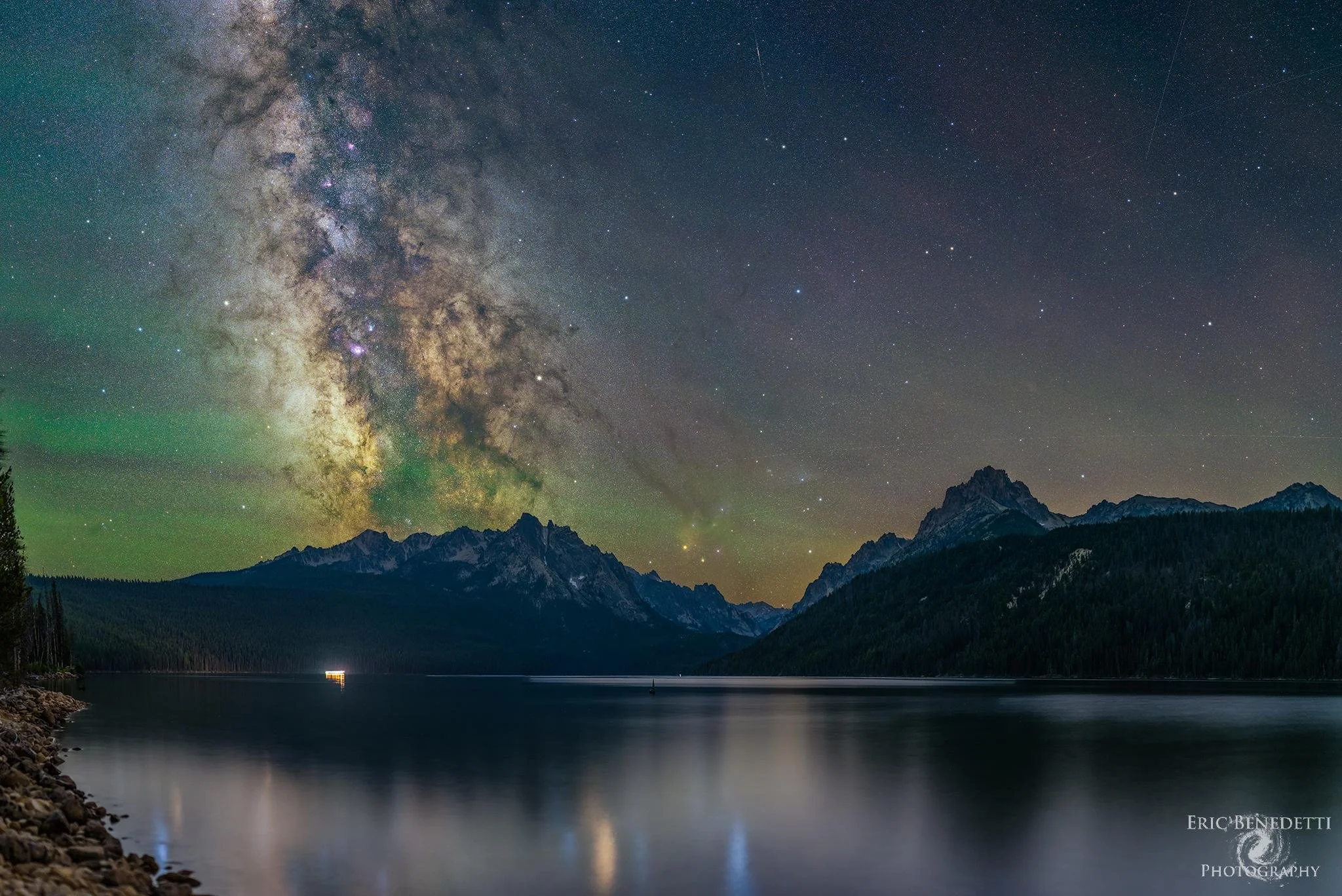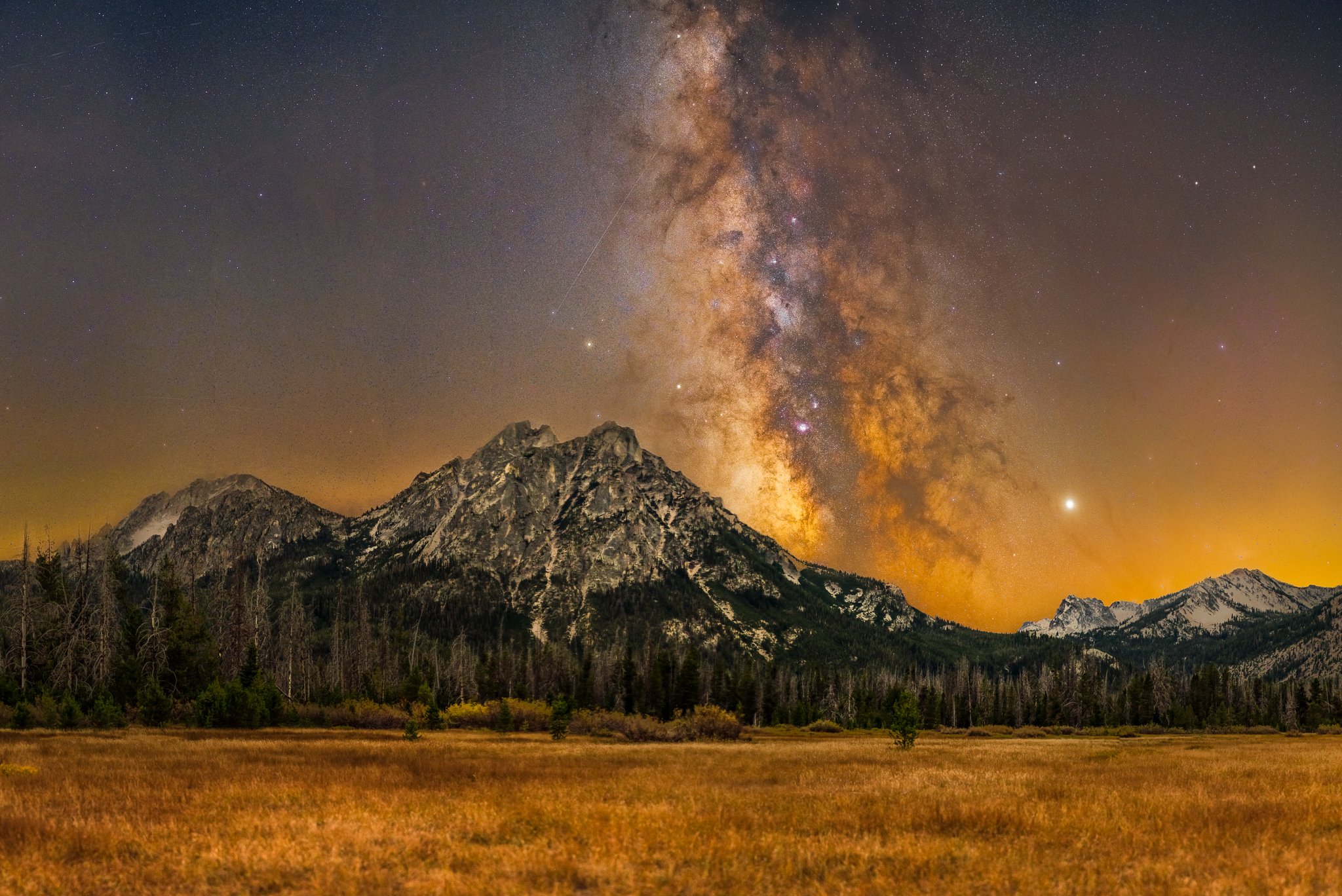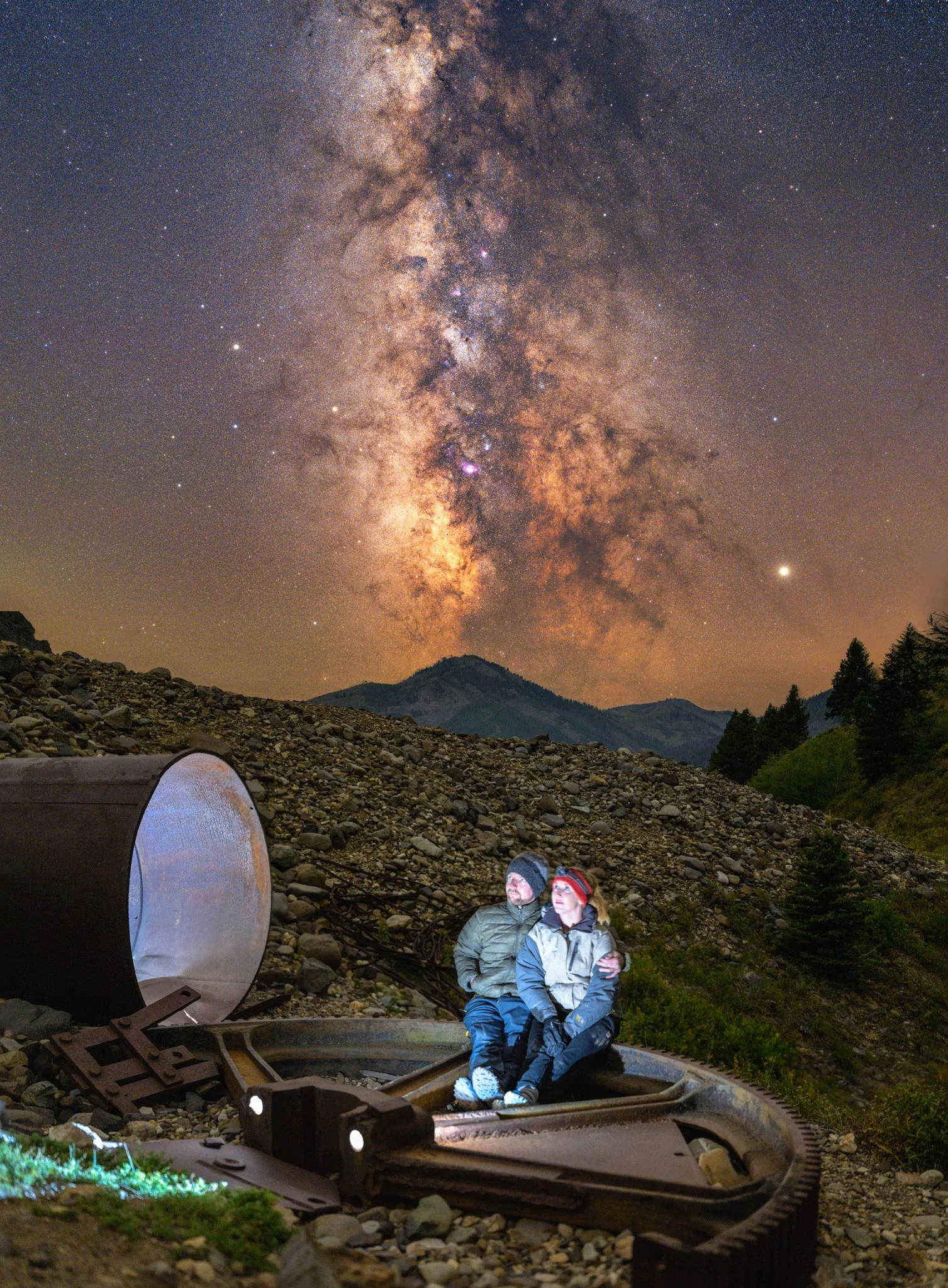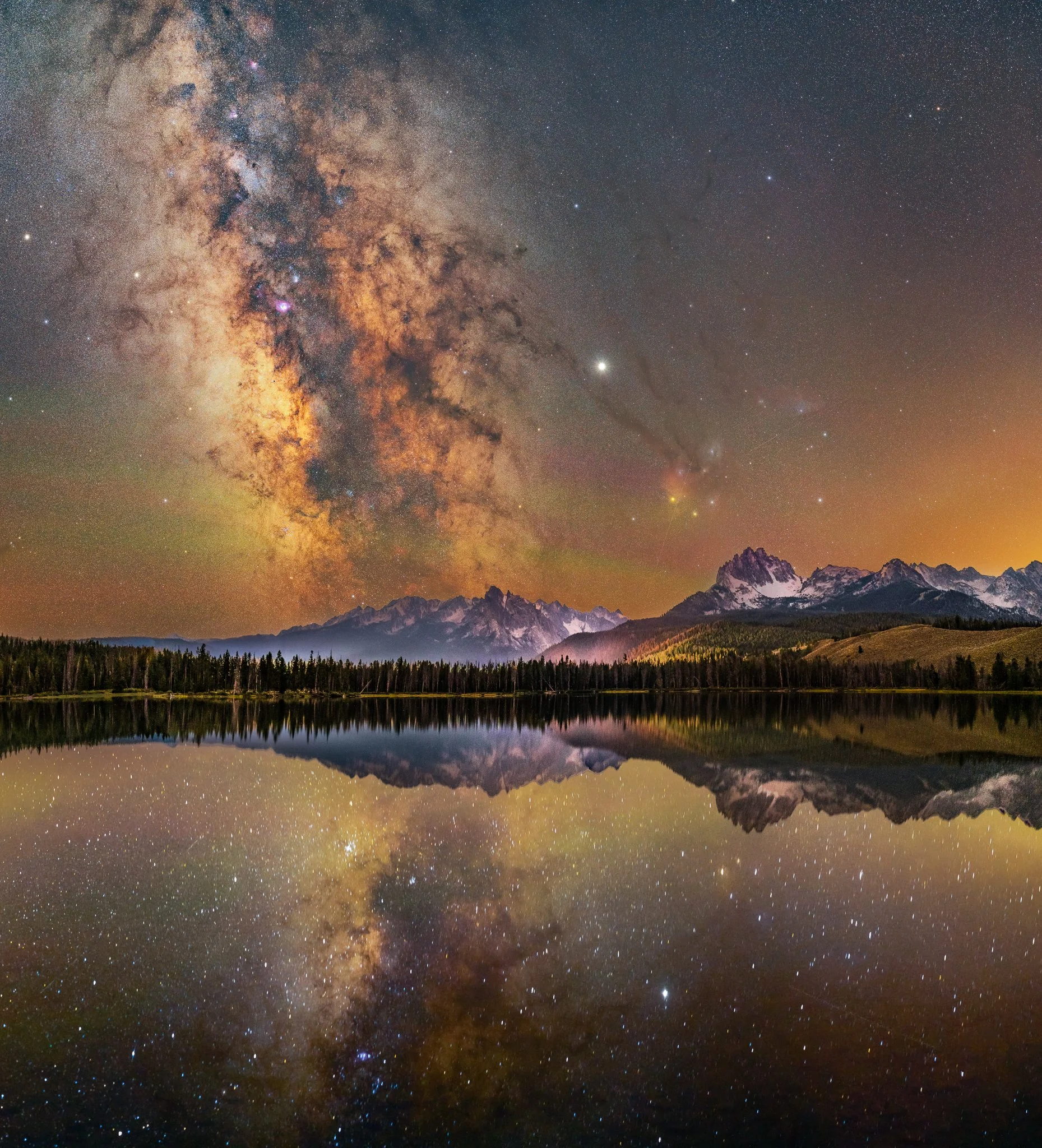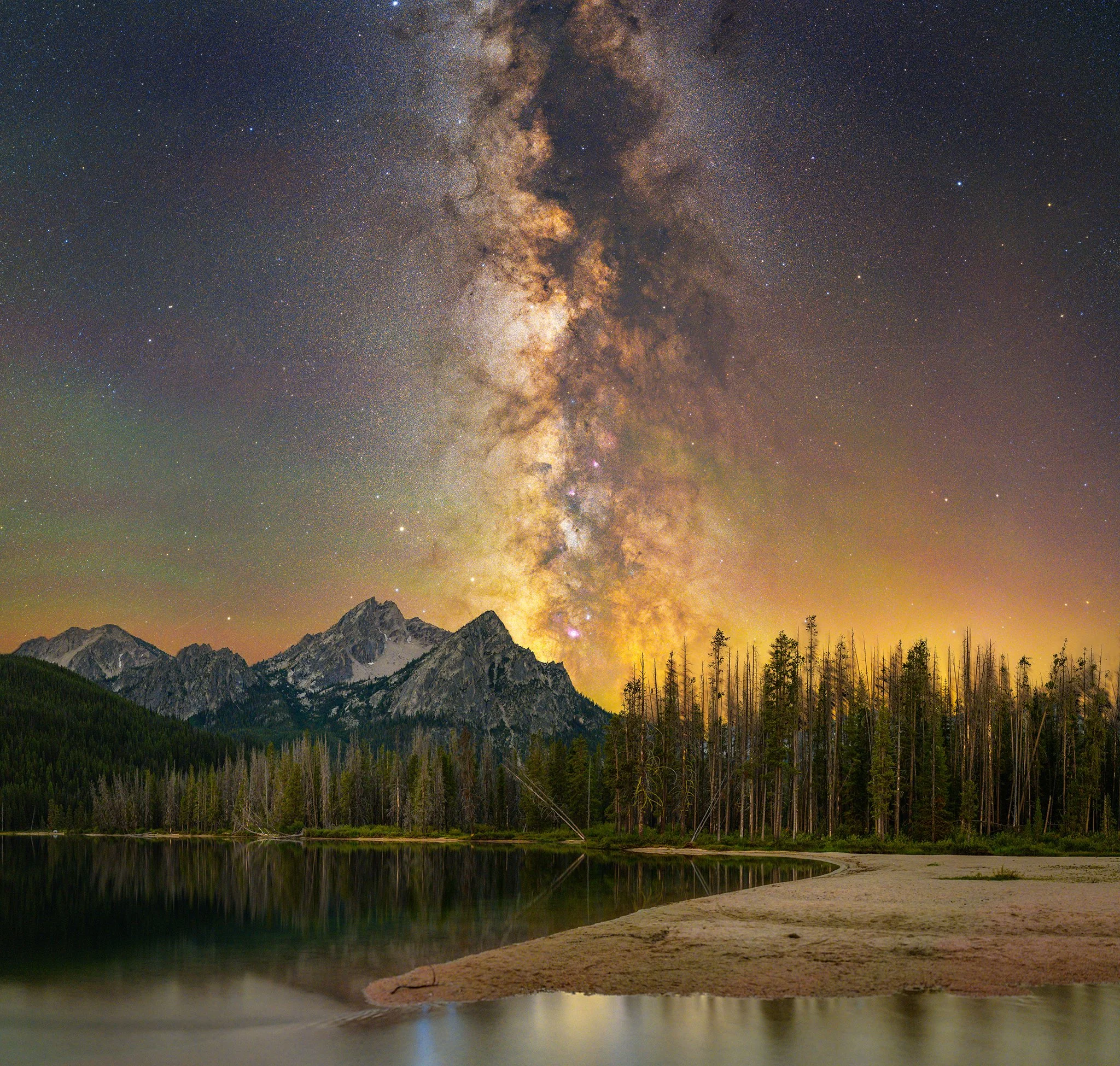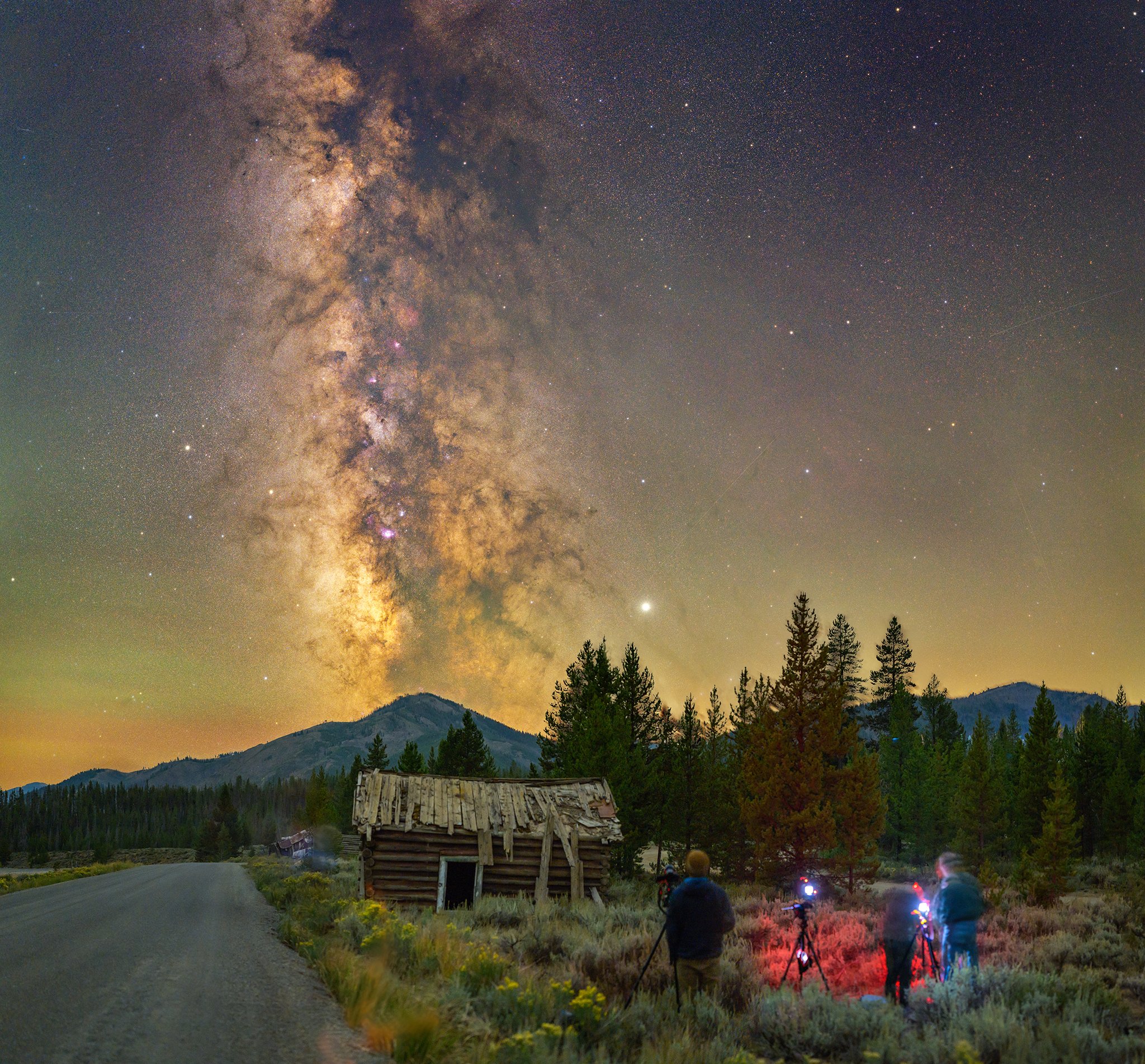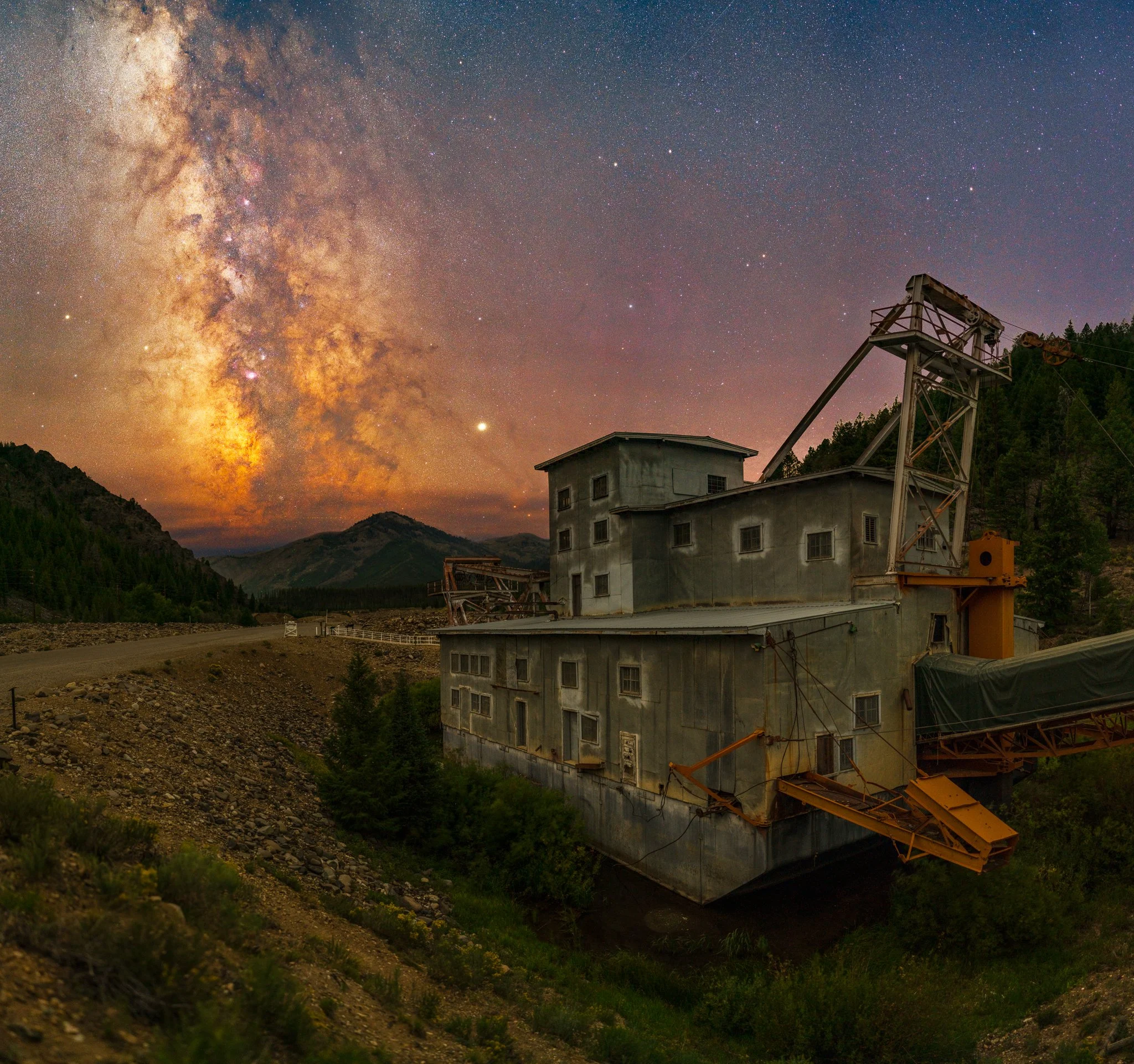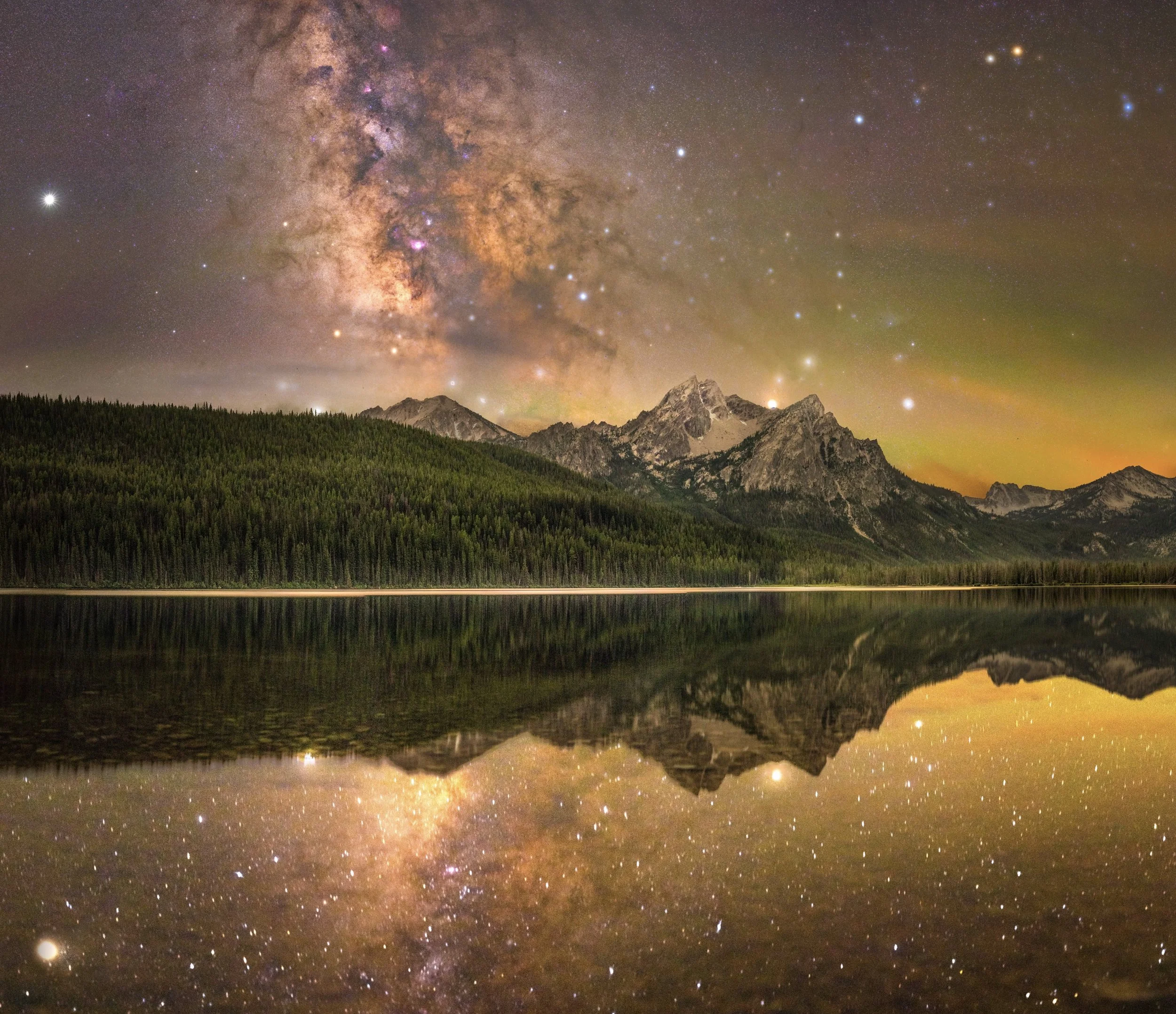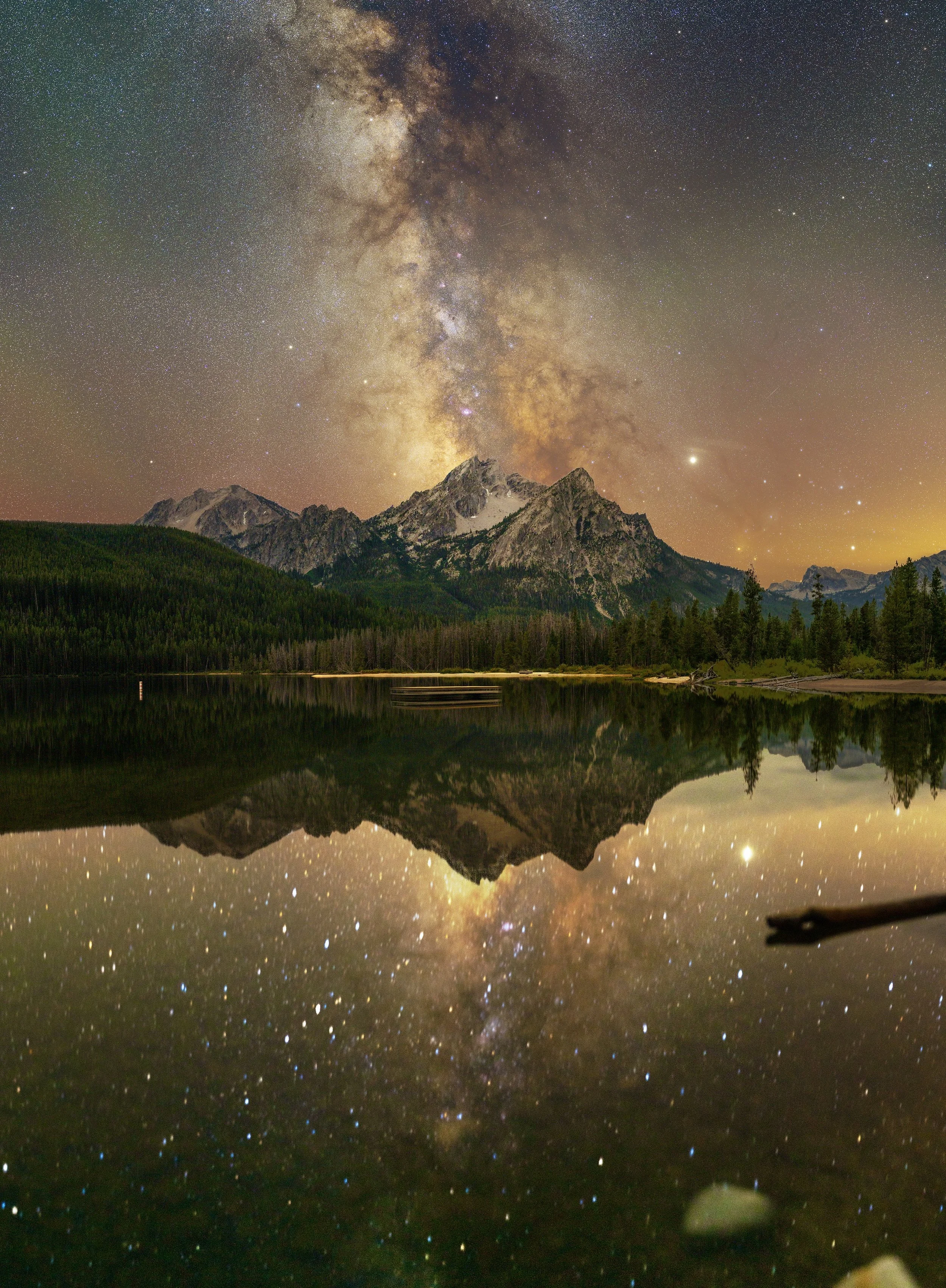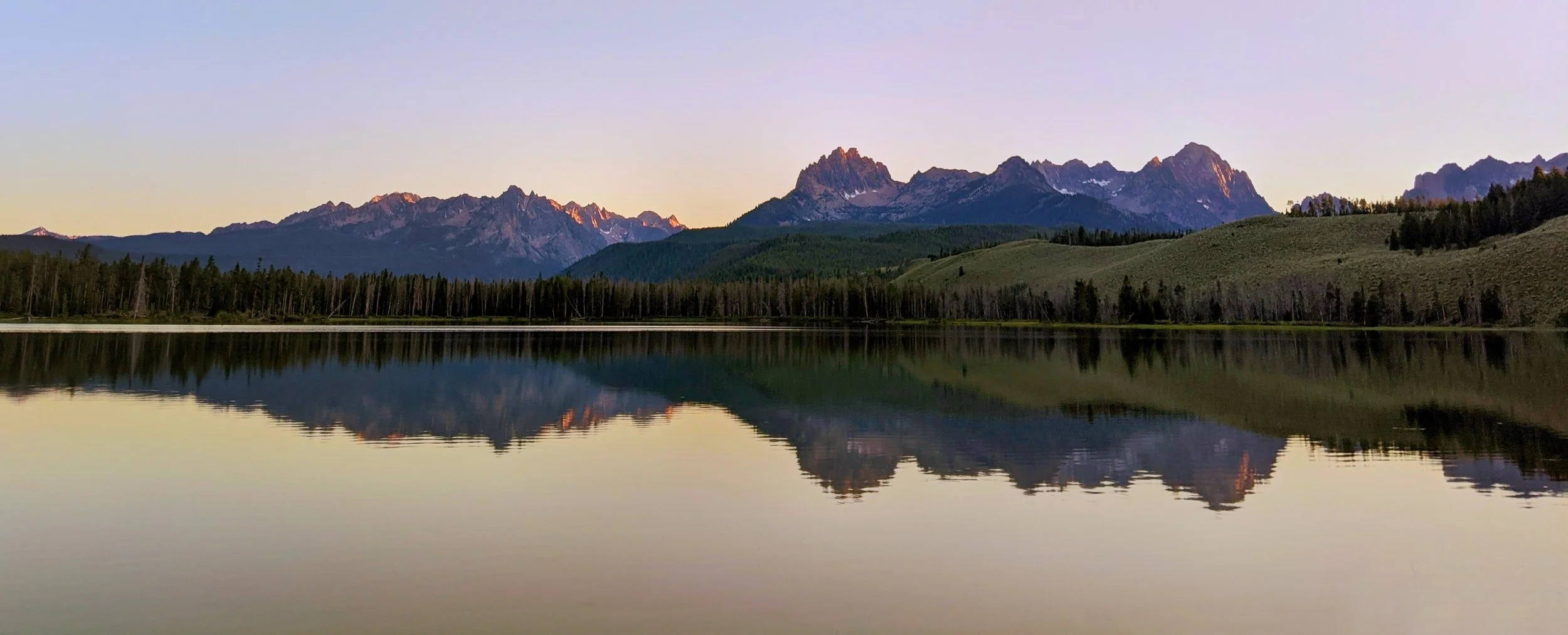
IDAHO
Eric’s lifelong bond with the majestic Sawtooth Mountains near Stanley, Idaho, is a cherished family legacy. His father began exploring these awe-inspiring peaks in his own youth, igniting a passion for the natural world that has been passed down through the generations. Now, with Malia joining the family adventures, they proudly represent three generations of nature enthusiasts, each deeply connected to the stunning beauty and serene wilderness of the Sawtooth Mountains. Their shared experiences in this breathtaking landscape are not just trips but a treasured tradition, celebrating the enduring allure of nature’s wonders.
The Sawtooth Mountains, a remarkable range within the Rocky Mountains in Central Idaho, present an intriguing geological history intertwined with exceptional conditions for astrophotography and astronomy. Formed primarily from the Cretaceous Idaho Batholith and the Eocene Challis Volcanic Group, these mountains showcase a diverse array of igneous rocks, notably granites and metamorphosed sediments. The jagged peaks, which give the range its name, are primarily the result of alpine glaciation during the Pleistocene epoch, sculpting the landscape into sharp ridges, U-shaped valleys, and numerous glacial lakes.
In terms of dark skies, the Sawtooth Mountains are situated in a region with minimal light pollution, making them an ideal location for astronomical observation and imaging. The clear, dry air at high altitudes provides excellent atmospheric conditions for astrophotography. The dark skies allow for an unobstructed view of celestial objects and phenomena, enhancing the visibility of stars, planets, and deep-sky objects. This combination of geological splendor and pristine night skies makes the Sawtooth Mountains a dual attraction for both geologists and astronomy enthusiasts, offering a unique opportunity to explore the wonders of the Earth and the cosmos simultaneously.
Eric: Sawtooth Mountains, Idaho
Eric: Sawtooth Mountains, Idaho
Eric: Sawtooth Mountains, Idaho
Eric: Sawtooth Mountains, Idaho
Eric: Sawtooth Mountains, Idaho
Eric: Meadow near Stanley Lake
Eric: Stanley Lake, Idaho
Eric: Sawtooth Mountains from near Stanley Lake, Idaho
Eric: Sawtooth Mountains, Idaho
Eric: Abandoned mine cabin, Sawtooth Mountains, Idaho
Eric: Aurora in Yankee Fork, Idaho!
Eric: Aurora in over the Sawtooth Mountains, Idaho!
Eric: Self portrait, Stanley, Idaho
Eric: Aurora in over the Sawtooth Mountains, Idaho!
Eric: Stanley Lake, Idaho
Eric: Gold Dredge, Yankee Fork, Idaho
Eric: Yankee Fork, Idaho
Eric: Redfish Lake, Idaho
Bry: Stanley Lake meadow
Eric: Yankee Fork portrait
Bry: Redfish Lake
Bry: Stanley Lake inlet
Eric: Yankee Fork Dredge
Eric: Family photo near Yankee Fork
Bry: Yankee Fork Dredge
Bry: Neowise
Eric: Stanley Lake inlet
Bry: Redfish Lake
Bry; Stanley Lake
Bry: Stanley Lake
Bey: Sawtooth Mountains from Stanley
Bry: Stanley Lake
